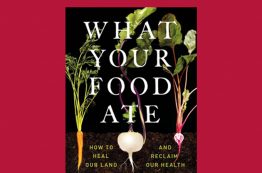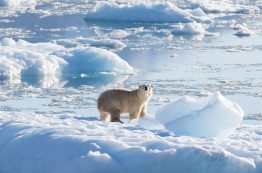Animals that live in groups tend to be more protected from predators. That idea might be common sense, but it’s difficult to test for some species, especially for wild populations of fish that live in the ocean. A new University of Washington study that leverages historical data has found unique support for the “safety in numbers” hypothesis by showing that Pacific salmon in larger groups have lower risk of being eaten by predators.
Read more at UW News »New study: 2021 heat wave created ‘perfect storm’ for shellfish die-off
It’s hard to forget the excruciating heat that blanketed the Pacific Northwest in late June 2021. Temperatures in Oregon, Washington and British Columbia soared to well above 100 degrees Fahrenheit, with Seattle setting an all-time heat record of 108 degrees on June 28. During the heat wave, also called a heat dome, scientists and community members alike noticed a disturbing uptick of dying and dead shellfish on some beaches in Washington and British Columbia, both in the Salish Sea and along the outer coast.
Read more at UW News »Q&A: Healthier soil leads to more-nutritious food, argues new book by UW geomorphologist David Montgomery
During the pandemic lockdown, many people were dabbling in urban farming or growing houseplants. University of Washington geomorphologist David Montgomery was exploring a deeper topic: How do practices that rebuild soil health affect the quality of the food that comes from that soil? His new book, “What Your Food Ate,” released June 21 from W.W. Norton & Company and co-authored by Anne Biklé, explores this question.
Read more at UW News »Newly documented population of polar bears in Southeast Greenland sheds light on the species’ future in a warming Arctic
Scientists have documented a previously unknown subpopulation of polar bears living in Southeast Greenland. The polar bears survive with limited access to sea ice by hunting from freshwater ice that pours into the ocean from Greenland’s glaciers. Because this isolated population is genetically distinct and uniquely adapted to its environment, studying it could shed light on the future of the species in a warming Arctic.
Read more at UW News »UW, Seattle Public Library, Seattle Public Utilities collaboration uses VR goggles to visualize sea level rise in Seattle
A new project uses virtual reality to help communicate what climate models are predicting: Greenhouse gas emissions are increasing Earth’s temperature, melting glaciers that could create many feet of global sea level rise by the end of this century. The Our Future Duwamish project, available to community groups through The Seattle Public Library, uses Oculus Quest 2 goggles to help viewers imagine rising seas from a vantage point along the South Seattle waterway.
Read more at UW News »





